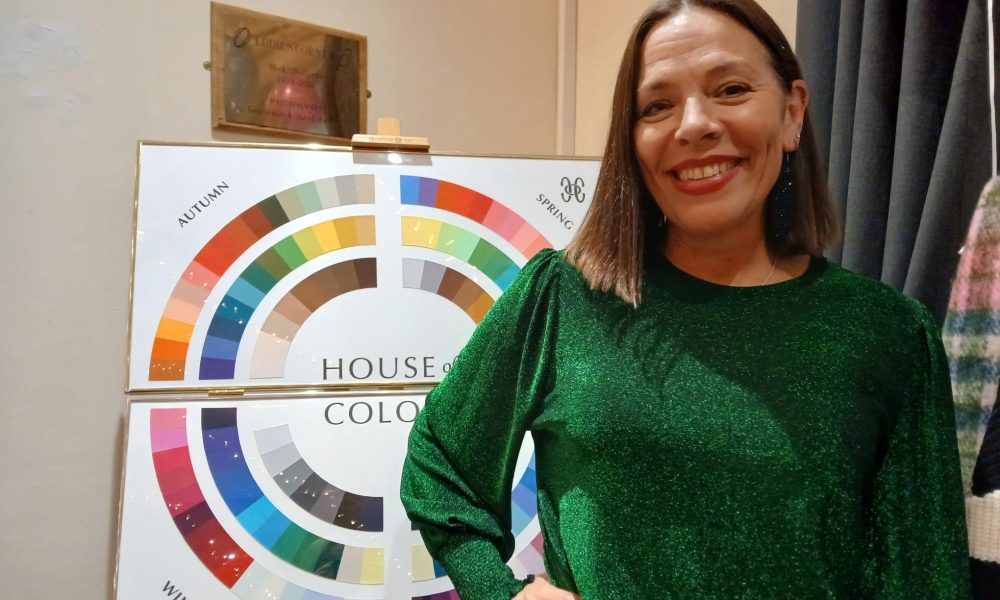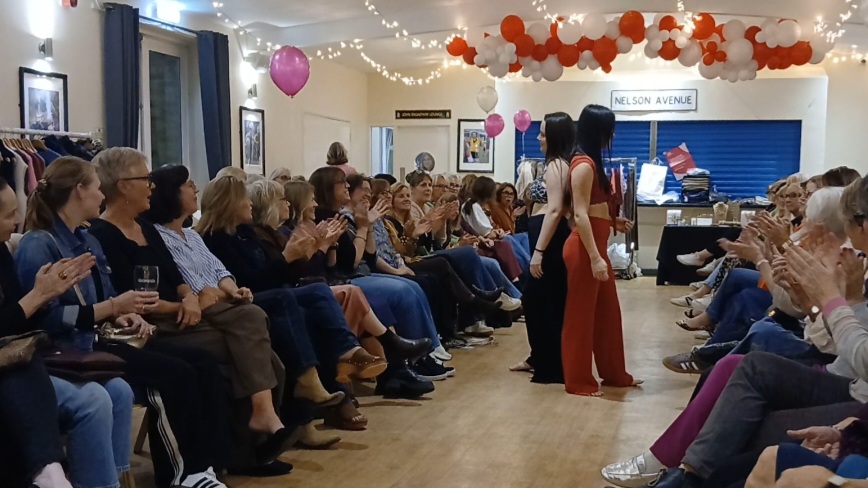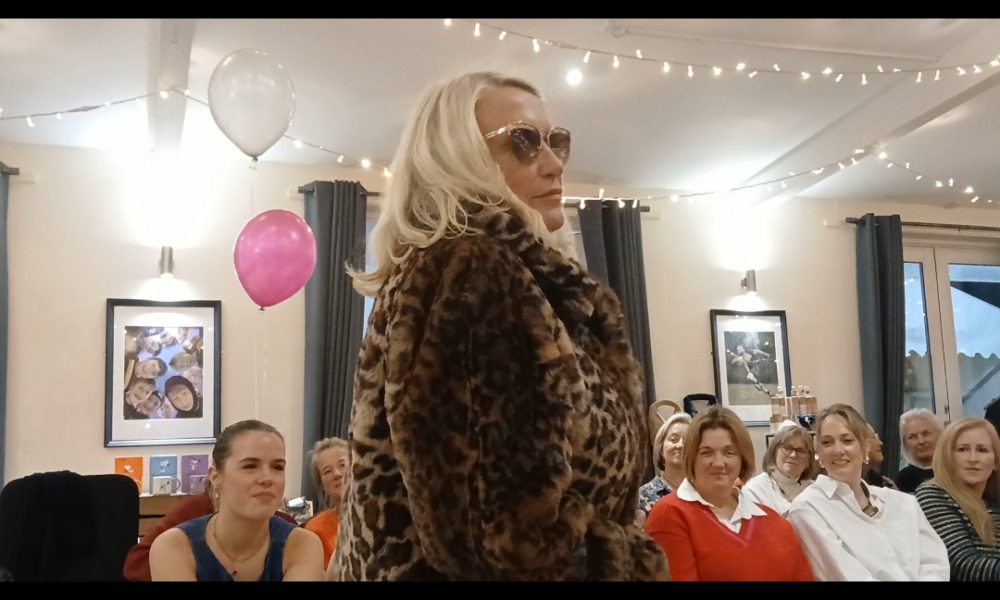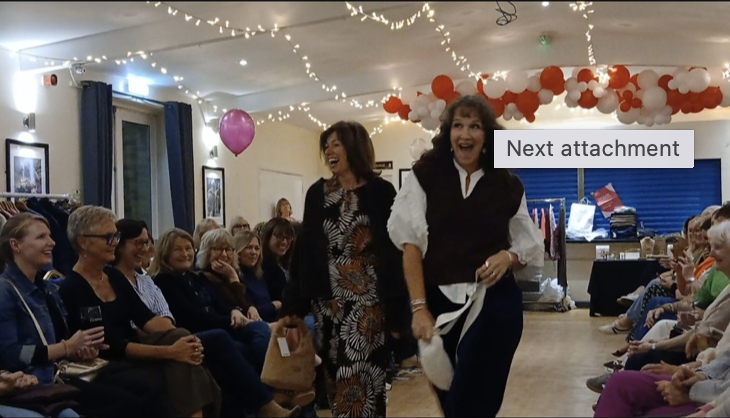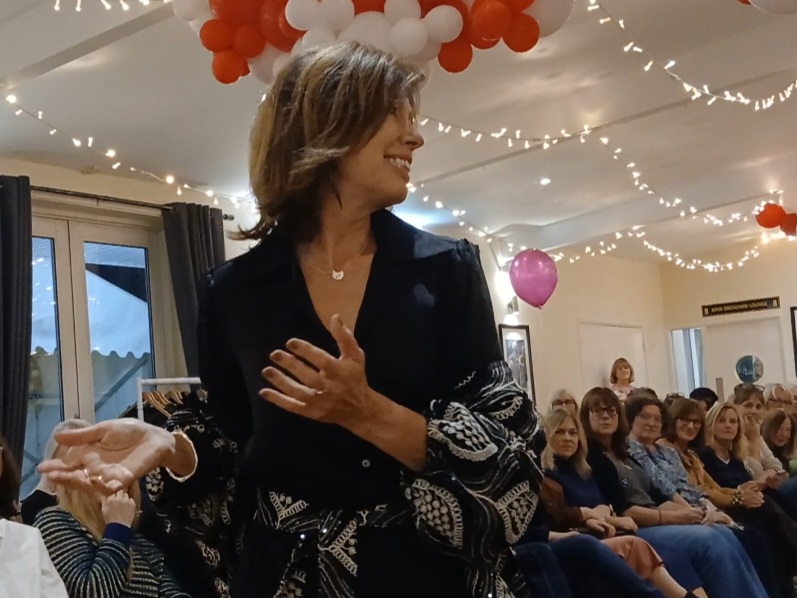Culture
Silk, sparkle, and leopard print: A night of fashion and femininity




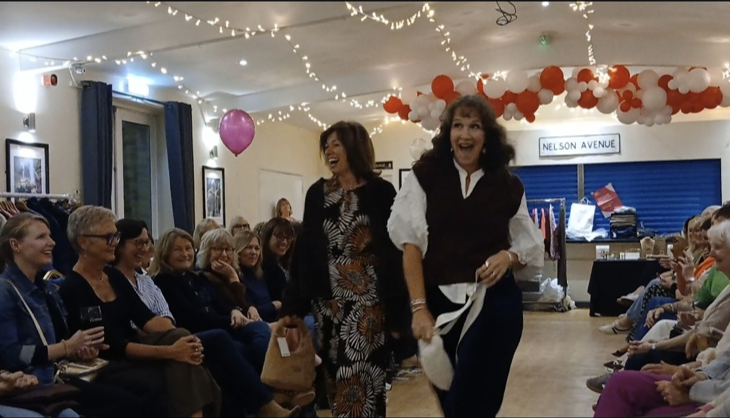
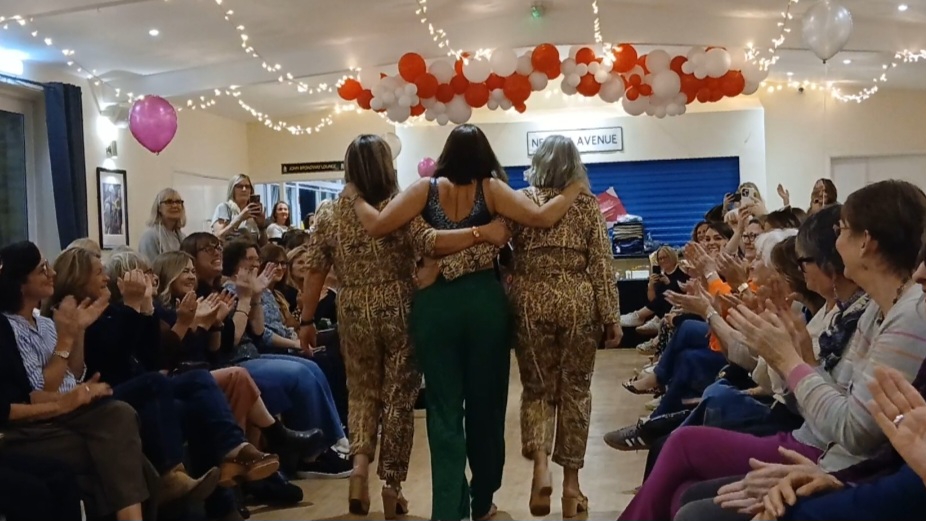
Bright, shimmering, and fearless – when you picture runway fashion, you might imagine the glittering catwalks of Milan, the iconic stages of London Fashion Week, or the show-stopping looks of Paris.
But what if the usual glam scene was replaced by the unexpected backdrop of a slightly muddied rugby clubhouse in Winchester?
That’s exactly what happened when the Winchester rugby clubhouse was transformed into a vibrant runway bursting with colour, texture, and bold layering.
This unique venue hosted a fashion fundraiser show in support of Breast Cancer Now, bringing together season-defining styles and local boutiques in a dazzling celebration of style with purpose.
The event wasn’t just a fashion show, it was a curated experience where every look told a story about the wearer, the season, and the art of fashion itself.
Each look was carefully attributed to its season by colour consultant Kate Moss Jones, who expertly guided the audience through an inspiring palette of autumnal rusts, serene winter neutrals, and punchy spring pastels.
Her insights helped the crowd understand which shades, fabrics, and silhouettes would best flatter them, proving that fashion isn’t just worn – it’s experienced.
Mint Tea Boutique set the tone with a masterclass in effortless chic.
The Café Jacket and Kate Trousers exuded relaxed elegance, perfectly balanced with pleather skirts paired with the Tessa blouse in warm autumnal tones, with soft textures meeting modern romance.
French-inspired pieces then took the spotlight: crisp blouses teamed with pleather jeans, denim dresses cinched with black belts, and cardigans layered over Twiggy jeans demonstrated the season’s versatility, each ensemble thoughtfully positioned for its ideal moment in the year.
Layering was a dominant theme throughout the evening. Numph denim co-ords paired with fluffy totes whispered casual sophistication, while Sugarhill waistcoats and barrel jeans added subtle drama.
Nessy blouses with romantic collars softened the structured edges of tailored trousers and jackets, proving their adaptability from winter to summer.
Then came the sparkle: pleather trousers with gold glitter tops, Atelier jackets over Yazz tops, and shimmering Sassi sequin jackets paired with Marta tops turned every step into a statement.
Accessories punctuated each look with personality – from Heelon Moore’s slouch bags to Sixton’s leopard print crossbody bags, gunmetal clutches, and faux-fur details – making every outfit both aspirational and approachable.
Outerwear stole the show too, particularly the Numph reversible faux shearling coat layered over a Zolver leopard-print dress and tank, blending boldness with softness and finishing looks with a feminine, editorial flair.
Seagrass Bay’s finale brought a uniquely romantic touch with silk leopard-print pieces edged with shimmering pink lingerie.
Their soft drapes, delicate fabrics, and thoughtful colour choices created a dreamy yet grounded femininity, the kind of styling that makes hearts flutter on any runway.
Sustainability was woven in seamlessly through Re:dress, whose sustainable, pre-loved pieces dazzled with vibrant textures and colours, proving eco-conscious fashion can be just as captivating.
Bold prints from Ellie & Bea, like the Saint Tropez Eda Maxi Dress in Black B Zebra, and the understated elegance of H&B Style’s Dijon Easy T-Shirt Dress in Blue/White Wide Stripe rounded out the mix, showcasing the power of simplicity.
Most models were walking the runway for the first time, yet their editorial confidence was unmistakable. Bold looks, strong stances, and the effortless pairing of unexpected textures brought energy and courage to every step.
From Mint Tea Boutique’s serene autumn pleathers to Seagrass Bay’s romantic silks, each outfit became a lesson in colour, confidence, and style – illustrating how clothing can reflect both personality and season.
The evening was a vivid reminder that fashion can be playful and purposeful, glamorous and generous.
While the proceeds supported Breast Cancer Now, part of the triumph was the dazzling parade of colour, texture, and feminine energy that left every guest inspired, enchanted, and ready to wear the season boldly.
Culture
Where confidence takes centre stage: How theatre transforms

Performing arts education isn’t just about learning to act, dance, or sing – it’s vital in developing many young people’s confidence and self-expression.
In a digital age where young people are spending more time on their devices than ever before, theatre education provides lifelong skills like communication, resilience and teamwork.
I caught up with some of the students at Artisan Theatre School, a Hampshire based youth theatre club, to see if this rings true.
Ben, 18, said his time at theatre school has “helped develop people skills” and made him “a more confident person”.
He urged other young people to “get involved and enjoy it!”
Daniel, 17, shared a similar sentiment saying his “confidence has grown a lot”.
Theatre education can open a whole world of new opportunities for young people, giving them the space to discover their talents and explore future career paths.
Lucy, 17, has attended Artisan Theatre School for nine years and said: “I want to be a performer in some capacity.”
She added: “That’s my dream because of Artisan.”
Emma, a singing teacher at the school, said performing arts education is “beneficial to anyone,” not just those pursuing it professionally.
She added it can be especially valuable for children with SEN, helping them build confidence, improve communication, and “come out of their shell” in a supportive environment.
Unfortunately, despite its benefits, arts education is not guaranteed for every young person.
Cuts to funding over the last decade has had a significant impact, limiting access to creative learning opportunities.
The Cultural Learning Alliance’s 2025 report reveals a 42% decrease in Creative Arts based GCSE entries since 2010, and a 27% decline in the number of Arts teachers.
Sam Blackwell, principal and founder of Artisan Theatre School, said arts education is “really important” and that “they don’t do enough of it in schools”.
She explained that her vision in creating the school was to “give back more to kids and get them being confident”.
To help fill the gaps left by reduced arts provision in schools, Sam plans to introduce additional classes and offer increased opportunities for her students to learn from industry professionals.
Culture
And we all keep dancing for it can’t get any worse (90s/00s)

The Shakespearean nature of Tony Blair’s time as Prime Minister is something that had never been seen and his obsession with “the spin” that had won him the 1997 election and made him one of the most popular prime ministers when entering office.
With large proportions of the public optimistic for his premiership incoming.
A fall from grace would ensue much like Macbeth.
It would be cruel and untrue to reflect on Tony Blair’s premiership to say that it was a complete failure, especially as many still see him as one of the best PMs the UK has ever had.
Since one of the biggest landslides in UK election history in 1997, he was able to push through many socialist policies without much of a hassle: inflation was low, crime was down by a third, children were achieving some of their highest results ever in school, thousands more students were going to university, a million pensioners and three million children had been taken out of poverty, the quality of the air, beaches, and drinking water was as clean as before the industrial revolution.
However 9/11 changed everything. The era of youthful optimism and rebellion has been replaced by what a lot of thinkers call post-post modernism.
At site Zero, George Bush claimed that “those who are responsible must be brought to justice.”
He outlined Cuba, Iran, Libya, Syria, North Korea and most importantly Iraq.
Once the troops stepped into Iraq, it was the start of a domino effect that quickly decimated Blair’s time as PM.
Unlike Kosovo and Sierra Leone, Britain’s involvement in Iraq did not have the public’s support.
In his book The Prime Ministers, Steve Richards remarks that Tony Blair had not assumed any cabinet position in the lead up to his premiership and asks:”What if Blair had been foreign secretary? at least he would’ve seen, and interpreted intelligence – an explosively contentious issue in the run-up to the Iraq War.”
And then, the day after London had been announced as the host of the 2012 Olympics, on the 6th of July 2005, 7/7 happened.
Four terrorists detonated bombs on public transport – 52 killed and 784 were injured.
When times get tougher and life gets sadder, what do people do? Dance to forget
Prince William and Kate were leaving a Chelsea nightclub at 3am, Prince Harry was partying with Kanye West and getting into a scuffle with photographers at 4am.
The 2000s club scene was here and everyone was taking part; it was loud, it was abrasive, and it was here to stay.
Since the introduction of the stifling 1994 Criminal Justice Act, which is considered to have brought the illegal rave era largely to a close, “free parties” were the new get-around of the law: Student clubs offering “buy one, get three free” on alcopops and 50p doubles for an hour.
Halls bars were £1.20 a pint. Artists like LCD Soundsystem, Missy Elliot and Rihanna began their rise to fame with dirty, booming soundscapes that captured the drug-fuelled atmosphere of clubs as everyone dances to a beat that never seems to end, drenched in sweat.
Films like Trainspotting capture the allure of 2000s clubbing but the grim reality, drugs have found their way into the club scene.
Much like the Oasis album Standing on the Shoulder of Giants is described as Oasis’ “come down album”, the 2000s was a comedown era of clubbing.
The times were sad, but the music got louder?
As David Cameron’s government entered Number 10 Downing Street in 2010 and ushered in 14 years of austerity, where exactly would clubbing culture go with almost all clubs closing….
Culture
REVIEW: Sigrid – There’s Always More That I Could Say

2 out of 5 stars
A disappointing third album filled with negativity
In all honesty, I was late to Sigrid’s party.
I started following the Norwegian pop star in 2023 when she had already released two albums and completed a slew of EPs and international tours.
In no time at all, I was captivated by her rasping tones, funky rhythms, and cool electronic synths.
When news broke that her third album would be releasing on 24 October, it was no surprise to find myself listening and assessing it…
Jellyfish is the first single and the most lighthearted. I like it.
It’s a nice story about two people meeting at a dance and kindling a relationship.
Sigrid sings in a syncopated rhythm, giving a jazzy tone to the tune.
For the first time in her career, she includes a flute.
Cold, gritty, grim
It plays a flourish at the beginning but I can’t hear it throughout the rest of the track. It would be good to hear more of the flute in future.
Fort Knox is single number two. As the name suggests, this is a cold, gritty, grim song about a woman betrayed by her man.
This betrayal cuts so deep that she has retreated into her shell to “lock my love up in… Fort Knox”.
I enjoyed the dramatic, dark nature here, especially the war cry chorus throughout the song.
Towards the end, you would think the song has finished before it plays one more crescendo of strings to cap things off. I thought that was unnecessary.
The third single, Two Years, is written from the perspective of the woman’s boyfriend, another new departure for Sigrid.
He has been chasing for that exact period of time. It’s a cheery song with a strong beat, despite the desperate lyrics like: “What are you running from? / Why did you let me go?”
I’ll Always Be Your Girl is another sad song of frustration and heartache caused by a rowdy, hot-headed partner.
It is sung very well, especially the pleading chorus line, and the drum-guitar combination gives me something to nod along to.
Unconventional energy
Do It Again is the most unremarkable song on the album.
There is a good guitar and drum track, however the story again is quite predictable for Sigrid (being tempted to rekindle on old flame relationship).
Kiss The Sky returns to more unconventional energy which is great.
A lovely fade into the track leads into the main verses.
This time, Sigrid is speaking her verses with a distorted effect rather than singing them. It sounds good and complements her natural raspiness.
A strong guitar riff carries us through the bridge. The electronic synths make this seem like a 1980s dance track.
It’s only the lyrics that make this song a story of disappointment between lovers.
There is sexual innuendo in Hush, Baby, Hurry Slowly.
You could interpret it as a man and woman deciding whether to move forward with their relationship.
You could see it as partners deciding whether to have sex or not.
As a result, it’s an interesting song and makes you listen to try and work it out.
The structure shakes things up by starting with the chorus fading in.
The song ends with the melody slowing down and lowering in pitch, reflecting the title in musical terms.
The title track is the obligatory solo piano song.
Sigrid has had at least one piano focused song in all albums.
This is the most beautiful song in the album, featuring solo piano and a nice resonance on the voice.
The lyrics still contain tensions between people, like “giving…my worst” as a girlfriend.
Nevertheless, this is my favourite song from this year’s collection.
The penultimate track is also the longest in the album.
Have You Heard This Song Before picks up the energy from the previous song with a predictable but welcome mix of drums and synths.
The lyrics are pretty hopeful in tone about wanting to spend time with your partner. This is the most positive track on the album.
The last song, Eternal Sunshine, is a conventional finale song.
It has a regular beat and instrumentation.
It is another song built out of frustration with a partner – she wants to “drink” him out of her mind.
It would have been nice to have something different to end on – maybe a different topic.
This is the shortest album Sigrid has released. That is disappointing.
There are 10 songs in only 31 minutes.
I would have expected the usual 12 tracks or more.
The previous albums managed it fine.
Sucker Punch (2019) and How To Let Go (2022) contained 12 songs. The Special Edition of How To Let Go added 15 songs on top of the originals.
This album differs from the last two in that every song but one is constantly loud, energetic, and pumping.
I would have preferred more balance between softer and pounding songs.
How To Let Go had more positivity in it, such as singing in a taxi, body-confidence in the mirror and making the most of life.
This album has replaced that with disappointment and frustration.
It is the album with the most “explicit” songs – never before have we had an album with so much swearing.
I hope that is toned down in future.
Here’s hoping that the next album is more positive, unconventional and creative.
Perhaps that will come out in three years, like the others.
There’s always more that Sigrid could say (sorry, that was a terrible joke).
-

 Winchester News Online2 years ago
Winchester News Online2 years agoWinchester M3 Junction 9 hit with environmental concerns
-
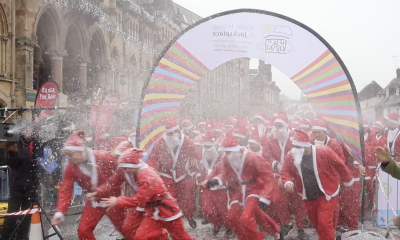
 News2 years ago
News2 years agoFestive Santa Fun Run is here again!
-

 Culture2 years ago
Culture2 years agoREVIEW: Oh What A Lovely War at MAST Mayflower Studios
-
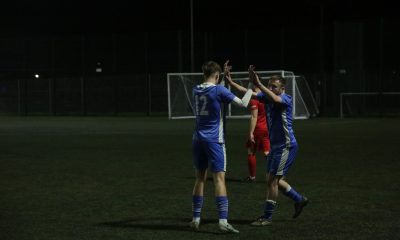
 Sport2 years ago
Sport2 years agoTwo late goals see Blues victorious in Romsey
-

 Sport1 year ago
Sport1 year agoWinchester City: Keeper Cairney rescues point with another late penalty
-

 Comment12 months ago
Comment12 months agoCOMMENT: Hair as a window on our health
-

 Winchester News Online11 months ago
Winchester News Online11 months agoWho will be appointed New England manager?
-

 Sport1 month ago
Sport1 month agoBillie Jean King – Battle of the Sexes – 1973



